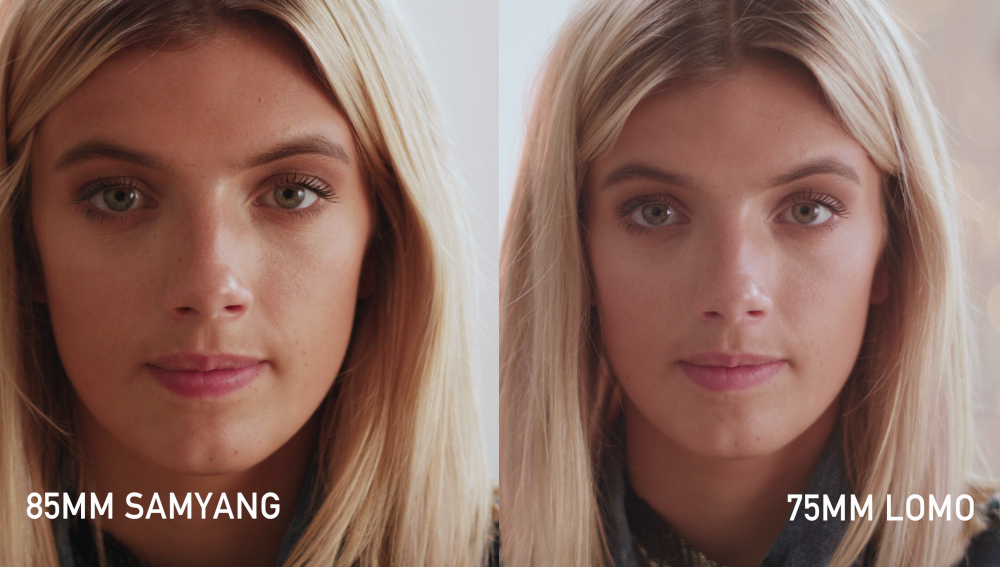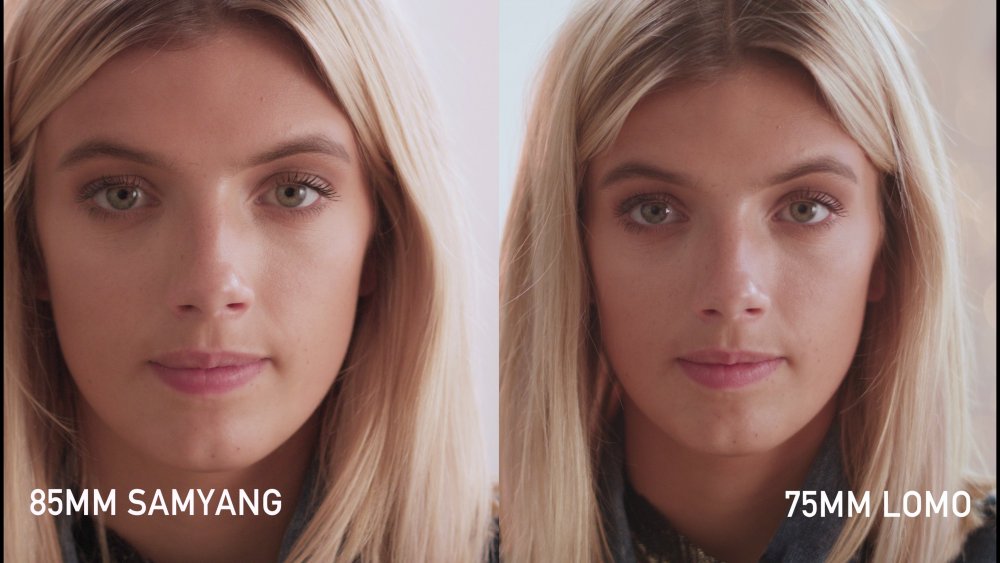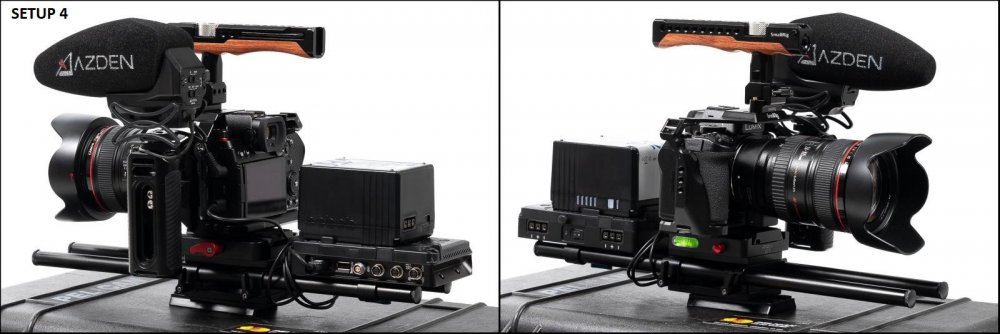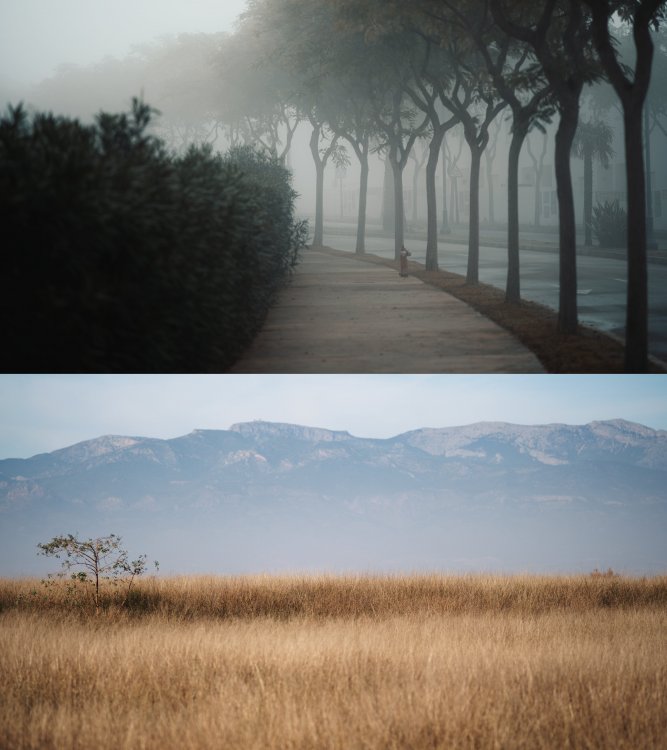Leaderboard
Popular Content
Showing content with the highest reputation on 01/31/2022 in all areas
-
@tupp Thanks, mine is on its way, hehe🙂2 points
-
Z9 & R3 are indeed the current flagships at D6/1DX3 equivalent prices. ..very nice specs on both but again on video side, you're not going to get WFM, false color, LUT support, dual ISO, time code, magnify during record etc. These are very important cine features imo. That is where R5C beats both, for much cheaper. But yeah no IBIS or instant photo/video switching. So yeah, there is no perfect hybrid. Always a compromise somewhere!2 points
-
My Journey To Virtual Production
majoraxis and one other reacted to KnightsFan for a topic
Thanks to this topic, I dug a little further into virtual backgrounds myself. I used this library from github, and made this today. It's tracked using an Oculus controller velcro'd to the top of my camera. "Calibration" was a tape measure and some guesstimation, and the model isn't quite the right scale for the figure. No attempt to match focus, color, or lighting. So not terribly accurate, but imo it went shockingly well for a Sunday evening proof on concept. https://s3.amazonaws.com/gobuildstuff.com/videos/virtualBGTest.mp42 points -

Canon EOS R5C
Juank and one other reacted to Andrew - EOSHD for a topic
It's almost impossible to tell that review apart from a marketing video.2 points -

2022 Weight Loss Challenge
projectwoofer and one other reacted to Andrew - EOSHD for a topic
It's not a vintage gear competition is it though? It's about smallest and lightest possible, even if it's a big compromise on image quality. It's how you use it that counts. I will try and get time this week to start the competition on front of the blog, then we can put some basic rules for point scoring down (nothing strict) and get shooting!2 points -

Laughable Chris and Jordan video on medium format
kye and one other reacted to Andrew - EOSHD for a topic
@kyeyup very clever what you can do in post to manipulate the image as far as computational optics go. For the sake of this thread though I think we should keep to the original topic. Feel free to open a separate thread for the other stuff, and if @Djangocan stop arguing with you that would be a plus. iPhone does computational optics in realtime, and there are apps to emulate anamorphic bokeh and all that sort of thing. Maybe in future with 8K, sensor size, focal length and FOV will ALL be computational, with smaller sensors or telephoto lenses being a crop with a depth map for computational bokeh. Until that day comes, we live in real world of real optics and real sensor sizes. Hopefully we can get back on topic, which was the unique depth of field of medium format and Chris from DPReview's video.2 points -
Pandemic Surprise! My lenses have fungus.
kye reacted to BabsDoProd for a topic
I've thankfully been in a rather dry environment and luckily kept my lenses in a clear storage case so if I'm tackling fungus it's because it was there in the lenses I bought online or locally in antique shops and occasionally a flea market or garage sale. If you look at my Instagram @zackbirlew you'll see some lenses I've taken apart and cleaned as well as my slip ups that led to damaged glass and broken lenses, thankfully not too many! My strategy is to keep each lens individually contained in a clear container with a push in locking seal or a clear screw top tupperware container (Ziploc brand or equal) with a silica gel packet. This helps isolate the lens from others and keeps it sealed dry with the clear case letting in enough light to scare off fungus. However, DIY lens cleaning is an entire skillset and research heavy practice that needs to be developed and you'll still run into lenses that are a shot in the dark as to whether you'll be able to take them apart and fix them back together properly. It's also an investment since you need to figure out all the tools and certain techniques and gotchya tricks involved but it is amazingly fun to do once you get going! This past year I've taken in a camera collection on top of my own and there may be another one coming from a family friend so I have A TON of lenses that need cleaning and maintenance as a lot of them are fungus infected or just dirty with dust from use and I'm going to be filming each lens cleaning and, if necessary, repair as I go through them. I'm currently trying to wrap up VFX post production on my first feature which has taken forever to get off the ground, long story, but the lens videos will be one of my weekend projects for the Babs Do Productions Youtube channel going forward. One thing to note is that you don't always need to take the lens apart to get the glass out, normally a lens spanner or rubber lens wrench will be able to remove retaining rings around the glass so you can get at the glass elements and the aperture blades if they need a wipe. Also, certain lenses simply require just the few screws of the lens mount ring taken off and others require a certain number of things to be taken off or even twisted apart, it just depends but I can say that older manual lenses are the easiest to do as they tend to be metal tubes holding glass and retaining rings in place. Most importantly, get some of those soft rubber or foam bead shelf liner rolls at the hardware or decorating store to lay down while you work on lenses as lens glass likes to slip out of your fingers and you don't want them falling onto and hitting or rolling off the table.1 point -
According to this release about the focussing... https://www.sigma-global.com/en/news/2022/01/20/17062/ * SIGMA fp L will be supported by updating to firmware Ver.2.00 scheduled to be released on January 27, and SIGMA fp will be supported by updating to firmware which is scheduled to be released in April. No word on what else will come to the OGFP, but I would imagine most of the same updates.1 point
-
@ZEEK just posted another EOSM, Magic Lantern, Super-16, instructional video, involving vintage glass. Magic Lantern offers square aspect ratios, but @ZEEK states that he prefers a wider frame.1 point
-
No, I asked you what does CS have to do with sensor size, not lenses. Simple question, you seem to be the one not following. By the way, the Yedlin quote you took was from his essay on color science. Again, off-topic. If you wanna quote Yedlin, at least try do it from one of his essays on format sizes which would then at least be relevant to this discussion: ON COMMON MISCONCEPTIONS ABOUT LARGE FORMAT OPTICS MATCHING LENS BLUR ON DIFFERENT FORMAT SIZES (btw you'll notice CS never gets mentioned. wonder why?) Now while all that Yedlin says is factually true, I can't say I necessarily agree with his conclusions that lean on the Chris Nichols side that there is no Large format look because DoF & FoV can be matched by equivalencies and that the audience won't know the difference: Since the audience can see only the final blur circles and neither the f/stop nor the sensor size, they can't see in the final image if blur circles are increased by a larger format size or by a larger aperture. Those two things are interchangeable in the final image, so this is not a "look" that's discernable in the final image. (It may be easier for the the filmmaker to achieve a certain size blur circle in one format or another but the audience also can't see how easy or difficult it is -- they only see the final image, so again, it's not a "look.”). This is where the MINI/65 comparison video comparing the 35mm to the 70mm shows a huge difference in look/aesthetic and imo contradicts this conclusion. His example of matching a 50mm at F11 to a 18mm at F4 is certainly not conclusive either imo. Shoot that LF 50mm at F1.3 and good luck finding an equivalent 18mm f0.5! Yet his response to that is again that the audience will never know so there is no look: Even in an unusual edge case where a filmmaker has a specific model of large format lens at an extremely wide aperture and the only lens model available to him/her for a smaller format camera can't open wide enough to get the same size blur circles: anyone who only looks at the final image and wasn't there when the image was captured can't SEE that the aperture was at its endpoint, so that's not a "look" -- it's just something that the filmmakers are aware of during production (that the aperture and not the sensor was the limting factor in this particular case). Let's keep in mind though that Yedlin is talking from a digital cinema perspective where S35 is still the standard and hence the format with most lens choices (vs 65mm LF). So this subjective point of view doesn't necessarily fully translate to our hybrid world where FF is the longstanding widespread standard and most people here invest in an according lens format system. So you color matched a lomo to a samyang shot in post. Congrats, but that still has nothing to do with sensor size. I strongly suggest you start another thread to discuss CS or even lens emulation in post, which are both interesting side topics.1 point
-
@Andrew ReidI'm still waiting for that speedbooster hasselblad gfx review 🙂1 point
-
Unfortunately, the switch is still near instantaneous. Hope we get the glorious 8 second wait soon..😉 I have a Sigma fp L, and it is a fantastic camera. Sigma documented in it's lens firmware updates that the regular fp camera will get it's firmware in April.1 point
-

5R Blablah not wunderbar. 5RC stop bugging me.
webrunner5 reacted to MrSMW for a topic
Actually, though I have had a few (but not many) I have had more groomzillas…and they are a sight to witness in all their ‘glory’ 😉1 point -
I'm having devious thoughts for a separate thread, but it will require some filming, so might take a bit. I think one key aspect of the computational stuff is having a depth map, which can be used to generate realistic anamorphic bokeh, which currently I don't think there are good simulations of really. Certainly this is one aspect where the stupendous resolutions will help - doing 3D edge detection on an 8K image is likely to generate a much better result than at native 2K or similar. The sheer weight and scale of the image from the 65 in that ARRI video is just wonderful. No doubt whatsoever. What was interesting to me was how "imperfect" the lens is on the edges, with smear and vignetting etc. It makes a wonderful look, but normally the high-end optics are as clean as they can make them, but not clinical. Sure, the 65 sensor is larger, but if you're making custom glass then I still don't see why you can't just scale everything in a lens design up proportionately and get a larger image circle. Maybe there's something I'm missing there though - optical design is definitely outside my expertise.1 point
-

Laughable Chris and Jordan video on medium format
PannySVHS reacted to Andrew - EOSHD for a topic
Yeah it was an eye opening moment that. It's a good lens on full frame as well, but the magic of the GFX 100 is it elevates certain lenses to a more interesting place. Makes them a bit more unique. I still haven't used the 35-70 on full frame, it's been permanently GFXed!1 point -
Hoping for some RAW goodness from 5d, Sigma FP and Bmpcc/Bmmcc. Also some 8bit nerd passion and fun vintage oddities. Andrew could show off his Canon dream lens. So many cool combos I would love to see. Someone had a Tokina 60-120 2.8. There is a photo of a Sony PMW F3 with a Nikon 28 to 70 with a Isco video 16:9 in the treasure corners of the EOSHD archives. Or the lightest gear, camera, lens like CyclingBen suggested in the original post. Well, I surely am with you on getting out again for some leisure time camera fun! @leslie1 point
-
Not a martyr at all. You asked a question and I answered it. If you think I'm off-topic then I guess you're just not seeing how it connects. No wonder you're not following. You ask what does colour science have to do with lenses. Let me ask - what did that quote have to do with colour science? You're right that the look of a specific lens is linked with the sensor that you use it on, but I am talking about the aesthetic effects of a lens attribute. For example, barrel distortion. Lots of lenses have that attribute. Luckily it's one we can add and manipulate in post. So is vignetting. So is contrast. So is halation. So is sharpness and so is resolution (in the sense we can reduce it in post). Depending on how sophisticated we want to be, we can stretch all these parameters to develop a 'look'. They're actually quite easy to adjust in most software, so it's not a super-esoteric kind of thing. It's simple enough that a person could develop some looks they enjoy and just save them as pre-sets, and apply them during an editing session. I've heard you mention several times that you're a fan of the Cooke look. While I'm not suggesting you can emulate that in post, what I am suggesting is that you could take a lens that was objectionable, perhaps because it is too perfect (like many complain the Sigma 18-35 is, for example) and apply similar adjustments to push it in the direction of a Cooke. No, it probably won't fool anyone, but perhaps it gives an aesthetic that suits a project, and maybe gives a look that's desirable. In fact, by adjusting the parameters individually, you could even tailor a look to a project where no lens in existence would give that exact combination. The show "The Chilling Adventures of Sabrina" on Netflix has a dark other-worldly vibe with huge amounts of lens distortions, which I suspect come from old anamorphics with huge and very compromised squeeze factors. While us amateurs are not going to be emulating anamorphic bokeh in post any time soon, the wild distortions are certainly possible with a few nodes in Resolve. This is the relevance of the Yedlin quote that @Django didn't seem to read / understand. By identifying individual lens attributes, isolating them and their influences and how we might emulate them in post, and by understanding which ones and how much give what aesthetic effects, we get creative control, rather than being limited to simply "shopping" for the look we want from any specific lens. I've shown this kind of thing on the forums before. Perhaps the people who resist an analytical approach simply don't understand what is possible? IIRC that was simply matching the colours ( @Django oh no! - looks like colour science might have something to do with lenses!! gasp, cough, splutter). The more we understand the elements of an aesthetic the more empowered we are to manipulate it and create it ourselves, which gives us greater potential for creativity. Isn't that what we're all trying to achieve?1 point
-

Laughable Chris and Jordan video on medium format
PannySVHS reacted to webrunner5 for a topic
All of the Contax Zeiss lenses are just breathtakingly great. Just jewels in your hand. Amazing engineering on all of it. And surprisingly fairly affordable compared to Leica lenses.1 point -

Laughable Chris and Jordan video on medium format
Andrew - EOSHD reacted to BTM_Pix for a topic
I still think back to when we put the Contax Zeiss 35-70mm on your GFX100 and how fantastic it looked. In the spirit of that particular trip, I would've attempted to buy it off you even though it was actually mine.1 point -
Oh I totally agree with you on that, different pairings yield different results. I also have the EF 50mm F1.2L and find it too lacking on crop sensors, but also have a FF 85mm Zeiss that looks great when adapted on my FS7's S35 sensor. There is no rule of thumb, its down to personal preference and look you're trying to achieve. Must admit I'm curious about how FF lenses must look on MF. Plenty of vignetting I'm sure. or are you using the 35mm crop mode on the GFX?1 point
-

Laughable Chris and Jordan video on medium format
PannySVHS reacted to Andrew - EOSHD for a topic
On the other side of the argument, it's not quite that simple either There are magic combos of mismatched sensor size and glass. This, granted, is more a matter of taste than anything to do with peak performance or corner sharpness. But I love the Contax Zeiss 85mm F1.4 on Micro Four Thirds as a fast telephoto, whereas on full frame I find it to be merely another portrait lens of which I have plenty. Usually it doesn't work like this. I find 50mm lenses on 2x crop sensor to be a no-mans land. The Canon 50mm F1.2L on APS-C and Micro Four Thirds I find lacking all that's nice about it on full frame. And what is basically a crap old boring £60 lens on full frame can really come to life on medium format. Minolta MD lenses for example. This is why you can't discuss a lens separately to image format. And this is why Chris & Jordan don't have a clue about depth of field or medium format. Maybe we could turn the spotlight back onto that. The fact that such a big proportion of the camera community is happy to idolise two ex-salesmen who don't even have a basic artistic understanding of photography and cinema.1 point -
From my experience with C200 & R5 CRL the footage is considerably sharper with finer detail. and of course 12-bit color. Should really unlock that DGO sensor and be an IQ game changer. If you've been underwhelmed by C70 up until now, be prepared for a significant IQ upgrade with the firmware update.1 point
-
I've not shot the C300 MKII and C70 side by side before. I feel the C70 has more dynamic range. Not so much in the highlights but you can really push the shadows far. I think the ticket is underexposing and boosting in post. Nothing beats ARRI in highlights, the C70 doesn't even come close. However ARRI is pretty noisy underexposed, though the colors hold up nicely even under a few stops. It isn't a cheap camera so I am not in a hurry to buy it. It would also be nice if the 4k 120p mode utilized the DGO capability. ARRI is still the better choice for 120p for me, even though its only HD.1 point
-
Panasonic GH6
Mark Romero 2 reacted to Video Hummus for a topic
I think this is the way to go. MFT will always kinda suck in lowlight. Would much rather have expanded dynamic range.1 point -
Canon Cinema EOS C70 - Ah that explains it then!
PannySVHS reacted to BenEricson for a topic
The C70 is a great image. In the right setting, it definitely looks great. Arri beat it in skin texture, color detail in the shadows, over exposure, color separation, etc. I’ve shot very consistently with the Canon C300 Mk2 for the last 5 years. The C70 is such a close image. I’m sure the OG C300ii would feel very close to the Alexa as well. The DGO sensor is great and all, but the C300 Mk3 / C70 is also 5 years newer than the C300 Mk2. I’m honestly a bit underwhelmed if anything. It’s just so similar. Cleaner... but again, it’s 5 years newer. Things like false color, better auto focus, long GOP, cleaner C-Log2, 4K/60p are all things that impress me more than the DGO sensor. I’ve shot projects where I used the C70 and C300ii next to each other for interviews. For better or for worse, I very much doubt anyone could tell the difference, even when looking at the raw source material. The highlights are great on the C70, but anything pointed into the sun sucks. You get the clipping blob in really bright sources or the sun. Once you see it, you know what to look for and it is always there. Pocket 6K probably does it worse. Komodo a little better. Film handles it by far the best. Ive said this before... but the Long GOP 4k codec on the C70 is so great. You get a cleaner, sharper image than the older generation Canon cameras and it looks really great. The files are also almost 3x as small. I’m interested to see what effect the CRL files will have on the image. If the files are even a little sharper and just a bit noisier / textured, that would be great.1 point -

Panasonic S5 User Experience
herein2020 reacted to MrSMW for a topic
I have the same access as any/everyone... It used to be (6 years ago), I lived in the UK and travelled to Europe or beyond. These days I live in France and mostly get booked for France, but do still get jobs outside of such as this year, I have clients for weddings in Germany and Switzerland. I only have enough gear to do the job, nothing surplus. Actually, having said that, I do have a Sigma 45mm f2.8 I received for free when I bought the S5. I have used it a couple of times but it just does not fit in with anything now I have finalised my 2022 kit. I also have Panny's own 85mm f1.8 and again, have used it, but it doesn't fit it in anywhere. Currently, I am keeping it for the few times I get stuck at the back of a church and need something longer than the 65mm f2. I may switch this out for the Sigma 90mm f2 at some point just to keep the consistency of an all Sigma lens lineup. I just need this season to get going in early April so I can actually crack on with everything I had planned back in 2019! 2018 was the first year I felt I had really cracked hybrid coverage, but still had a huge amount of refinement and polishing to do. I thought I'd cracked that in the 2019 season, but ended up somewhat frustrated when I realised I was still well short in so many areas. 2020 was going to be 'The Year', but it turned out to be 'The Year That Wasn't' apart from one solitary, compromised wedding. 2021... Nah, really limited and just could not get any momentum. 2022 is going to be the year 😉1 point -
@webrunner5Yes, Don, I think an OG Bmpcc with a cheap 10, 25 and 50mm C-mount might be easier to approach. Zeek just makes it look without hassle looking at it from my superficial perspective. I tested my Bmmcc only once and it looked perfect to my eye. It is not a hasslefree camera regarding rigging though. Out of the box the Eos M appears to be a fun camera once set up with the right ML settings. Thank you for the infos! @tupp It's interesting that we are looking for the perfect personal camera from different ends, looking at high end hybrids like r5, s1h, a7s3, xt3 cams and from the low end as well. I love low end cameras and i love this thread.:)1 point
-

Panasonic S5 User Experience
Mark Romero 2 reacted to MrSMW for a topic
I use an Anker 10k job which I’ve had for a couple of years now. They cost around 100 Pounds/Dollars/Euros and just work. In my experience anyway.1 point -
Panasonic S5 User Experience
Mark Romero 2 reacted to herein2020 for a topic
I use a V-Mount battery into a USB-A to USB-C cable, it works fantastic, I can shoot 6hr events without having to worry about the battery. Below is a picture of my long form setup. Click here for my other setups and parts list. I have given up on any kind of focus pulling on a gimbal, I just shoot with the deepest DOF I can get away with, use hybrid AF to get initial focus then try to keep the camera to subject distance within the focal plane. For real estate its easy since you can use wide angle lenses, for people its a different story. I've had plenty of takes ruined because of soft footage as the distance changed too much during the take.1 point -

Lenses
HockeyFan12 reacted to BTM_Pix for a topic
1 point -
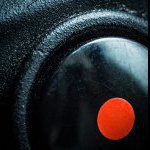
Pandemic Surprise! My lenses have fungus.
webrunner5 reacted to QuickHitRecord for a topic
I was looking at one of my beloved Kern Switars yesterday evening and noticed a little string of fungus in it. I haven't been using them as much since my professional work has robbed me of any time for passion projects as of late. The pandemic hasn't helped either. Anyway, I looked at a few more lenses and saw more more fungus. I ripped my whole lens drawer apart, and found that I have confirmed or suspected fungus on FOURTEEN of my lenses. I need to go back, wipe the front and rear elements down with some pancro, and look at them again when I am not in such a panicked state. But yeah, it's bad. Duclos-modded Nikkor AIS lenses, Tokina AT-X 28-70 2.8, Lumix 12-60mm, and even my backup Canon EF-S zooms (including the 70-200 f4 IS). This is pretty much my perfect nightmare scenario; something I have been extremely careful to avoid since I started building my collection 14 years ago. The silver lining is that it hasn't reached my Sigma Art Primes or Canon L Zooms that I use for work (I keep them in my camera case). I am SO glad that I never got around to building a set of Leica Rs or OKS in Oct-19 mount. And after this experience, I don't think I ever will. How did this happen? I have a theory. I bought maybe my third copy of the Helios-44 from Ukrainian seller in 2020. I inspected it closely for fungus as I always do and didn't see any traces. Then the pandemic began, and I really didn't touch my lenses for about a year (nothing to shoot). When I finally did pick up the Helios again, I noticed that it had a contamination. I isolated it and sold it for next to nothing to someone who wanted to try to clean it. That's the only time I'd seen fungus grow in a lens while in my possession, so my theory is that a previous owner had cleaned it, and then the fungus came back and infected my other lenses. But that's all speculation. The other thing is that we don't have an exhaust fan in the bathroom here. In the winter, we wake up most mornings to find the windows largely fogged over. There's a lot of moisture in the air here, especially when we can't leave the windows open. So, what's next? I'm trying to figure that part out. From what I can tell, the fungus hasn't advanced very far on any of these lenses, so I doubt they will affect the image quality if I can kill it before it grows. I've spent the day learning about ozone-free UVC lights so that I can start zapping all of my lenses regularly. I'm also leaning towards investing in a dry cabinet (anyone else use one of these?). But if I do that, I'll need to figure out the size needed, whether I also need to store my camera bodies in it (the Red One will be fun) and where it's going to go in my little office. I may also try to disassemble and clean some of the lenses myself, though previous attempts have yielded very mixed results, including discarding of lenses that I could never figure out how to re-assemble properly. Part of me just wants to dump them into a big pile and douse them with gasoline. What can I say? It's been a pretty dark 24 hours for me. But, I keep reminding myself that it is just stuff and I lived a pretty normal life without ever picking it up for a year or longer. Anyway, if you have any suggestions, ideas, or past experiences you'd like to share, let's hear them!0 points





